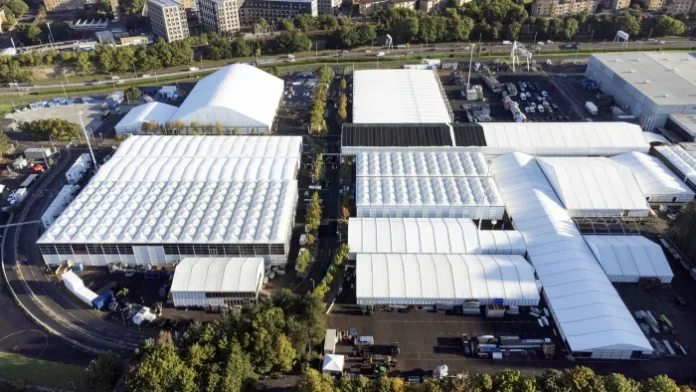An array of organisations aiming to host events at November’s UN climate conference in Glasgow have raised concerns about delays and the unusually high cost of building pavilions at this year’s COP26 summit.
Seven environmental and governmental groups told the Financial Times they were taken aback by the large sums quoted for the construction of pavilions, as labour and materials shortages delay planning and drive up prices.
One leading scientific organisation said it was quoted almost £500,000(US$679,000) in total to rent the space, for the structure to be built, and to pay for key items such as furniture and audiovisual equipment.
This year’s ground rent was about 30 percent higher per square metre than in Madrid in 2019, according to a UN official. Construction and materials costs were also higher than usual due to supply shortages, the official added.
The resulting delays have prompted questions about whether construction will be completed in time for the UK-hosted summit, which is less than four weeks away.
WWF, the charity, said that although annual pavilion costs varied, “this year we have noted that there has been a more significant increase than we have previously seen”.
The charity added that the conference was important for influencing policymakers and it was “vital” that all countries as well as civil society groups were represented.
Countries, scientific groups and non-profit organisations that attend COP conferences often commission the temporary structures, where they host educational events, meetings and parties. This year’s are to be built in the Scottish Event Campus centre by Orientations Events, based in Glasgow and Hamburg.
“From the outset, Orientations said ‘try not to use too many walls because it’s going to be really expensive’,” said Michael Funch, project manager for the Nordic Council of Ministers’ pavilion. “They knew there would be supply crunches.”
Total costs for the group’s roughly 100 square metre structure will amount to about £150,000(US$203,000), or about a third more than for those at the last COP in Madrid.
“It’s really hard for anyone who doesn’t have at least over £100,000(US$135,000) to be able to build a pavilion and secure that kind of representation,” said Funch.
Although some groups are recycling parts of their pavilions from previous years, many are not able to do so. All pavilion hosts must rent the ground space and also pay for construction.
One prominent scientific group that was quoted £500,000(US$679,000) for its pavilion has decided — at short notice — to significantly scale back its plans.
A further two organisations said they were still waiting for delayed quotes for the costs of their pavilions. A fourth, a non-profit group, said Orientations had proposed that it also pay for the cost of local accommodation for the workers.
Demand for pavilions at this year’s COP is especially high, though their construction cannot begin until mid-October when the event space becomes accessible.
One popular fixture of the COP conference in recent years has been the Pacific pavilion, which often features music and dance from the Pacific Islands, as well as talks and panel discussions.
However, at Glasgow the Pacific Islands will not have a pavilion of their own but a “space” that can only seat about 20 people, compared with seating for about 100 in a normal year.
“It is smaller, much smaller,” said Tagaloa Cooper-Halo, director of climate change resilience at the Secretariat of the Pacific Regional Environment Programme (SPREP). “It is pretty much the same cost as a much larger space in Madrid.”
Orientations declined to comment. A COP26 spokesperson said organisers were confident all the pavilions would be ready in time. “There has been unprecedented demand for pavilions at COP26 and the impact of Covid on the supply of essential goods and materials has increased cost.”
The UK government has funded some pavilions, including those for the Indigenous Peoples Forum on Climate Change and the Alliance of Small Island States, but said it was not able to support all requests.
SOURCE: FINANCIAL TIMES/PACNEWS














